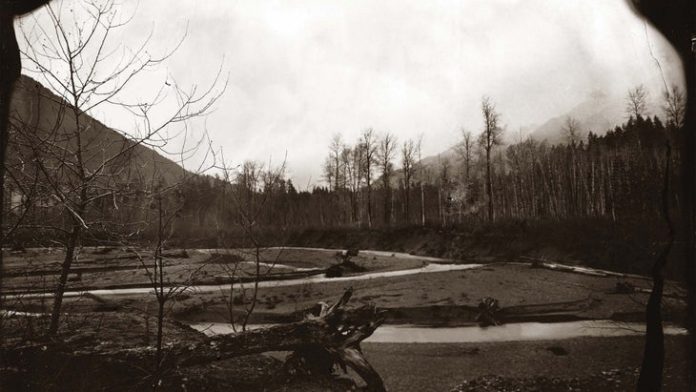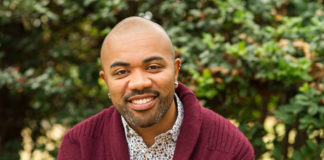Get full access to Outside Learn, our online education hub featuring in-depth fitness, nutrition, and adventure courses and more than 2,000 instructional videos when you sign up for Outside+ <a href="https://www.backpacker.com/outsideplus" class="o-content-cta-link" data-analytics-event="click" data-analytics-data="{"name":"Element Clicked","props":{"destination_url":"/outsideplus","domain":"<>","name":"in-content-cta","type":"link"}}”>Sign up for Outside+ today.
Big-leaf maples blush with the first bloom of autumn on the Olympic Peninsula in Washington State. Just beyond the parking lot in Olympic National Park, the Elwha River rushes north toward the Strait of Juan de Fuca. A forest service road, which once led to the ranger station, is now gated. Although I am expecting the first big storm of the season, the sky is now blue, so I stow my rain gear. Signs warn me about bears and a cougar that have been prowling the area. As a solo hiker, I’ll need to make noise along the way.
Not far down the road, I find the shuttered National Park Center, eerily quiet. Staffing issues here, too. The mists of recent rains evaporate from the roofs like smoke from burning buildings. It feels as if the landscape is swallowing up all traces of human interference. The pallor of decay adds to my sense of unease.
Four miles beyond, I come to the site of a former dam. At the end of the walkway, the concrete ends abruptly. Two hundred feet below, the Elwha cuts between the broken walls of the ruined structure, rampaging below the steep cliffs of Glines Canyon. I lean out over the railing and feel the exhilaration of the sheer drop and the roar of a river freed.
The project to remove this dam began in September 2011—the biggest such removal in U.S. history. That same month, I was preoccupied with another historic removal: the repeal of “Don’t Ask, Don’t Tell.” I had served as a gay man, openly, until the military denied the very existence of queer people in its ranks. I left the Navy in 2007 because that law threatened my career.
My journey along these waters, and into the mountains that feed them, have come to feel like a trek through the turbulent era when I came to terms with my own sexuality, and the forces arrayed against people like me.
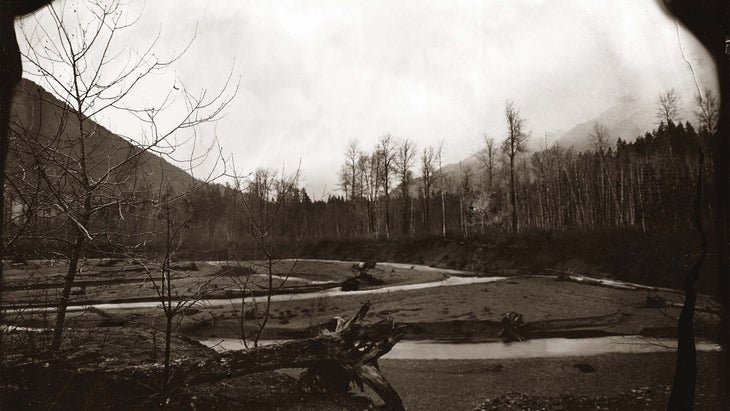
I heard an interview with my favorite poet, Gary Snyder, in which he recommended a book called The Account. It was written by the Spanish explorer Alvar Nuñez Cabeza de Vaca and published in 1542. Snyder said that it gave the clearest picture of what this continent was like before the arrival of the colonizers. Reading this book set me off on a new journey of my own.
As one of the first European explorers, Cabeza de Vaca came to North America from Spain to document the “New World.” Starting on the shores of Florida, he ventured deep into the continent, traveling through the lands of the Indigenous people. He was astonished by the different cultures and traditions he witnessed. As I read his account, I was thrilled to see a version of this land that I’d never encountered. It was so strange and distant that I felt like an explorer myself. I walked with him, step for step, until I read this line: “I saw one wicked thing, and that was a man married to another man.”
This judgment—so commonplace, so arrogant—defined much of my life. Even in a centuries-old account, on the same continent where I grew up nearly half a millennium later, there was tension between one rigid ideology and a more accepting one.
I was immediately interested in these two Indigenous men, this hidden history that I had never before encountered. As I researched more, I learned that partnered Indigenous men were documented by other explorers, too. They would become known as “two-spirits”: people who dressed outside of gender norms, carried heavy loads, participated in war parties, and were respected spiritual leaders, all while living with and committing to others who were like them.
Western civilization has documented homosexuality for centuries, much of it weighed down with ideological judgment. But these two men, like their brothers in that world, lived beyond society’s reach—and its harsh gaze— in a way that is hard to imagine now.
Five hundred years after these two-spirits lived, I’m trekking through the wilds of Washington’s Cascade Range, across Sulphide Glacier toward the peak of Mt. Shuksan, on the ancestral lands of the Nooksack people. This is my first mountaineering expedition, and Shuksan will be my second ascent of the journey. My body is weary, blistered, and chafed from days of toil. But my mind is clear and free.
A brilliant full moon illuminates the snowy landscape, so I turn off my headlamp to soak in the celestial glow. I’m roped in with two other climbers, and two other teams are ahead of us. All their headlamps point down. With my head up, I scan the expansive cirque that we move through and the dark stone pyramid before us. I’m overcome with a deep sense of spirituality. This place is sacred. It feels as if we have stepped outside of time itself. It brings tears of wonder to my eyes.
This moment on this glacier—the fullness of the moon, the deep intimacy with an intoxicating alpine landscape—assures me that I am where I need to be, that I am as natural as the scene around me. I grew up along the shorelines of the Salish Sea, only 80 miles from this summit. This is my home.
I have not always known this feeling.
From my early childhood, I was taught that people like me were unnatural—alien and unwanted. Raised in a fundamentalist Christian tradition, I was told there was no place for my kind. This realization would become ever more pressing as I forged my own path out into the world, trying to move beyond the ideological confines of my youth.
On our ascent to the summit, Robin Wall Kimmerer’s words from her book Braiding Sweetgrass come to me like a prayer: “To be native to a place we must learn to speak its language.” I’ve been trying to learn that language—a deep knowing and connection to a place.
As a gay man in a straight world, as a white man descended from immigrant peoples on a continent that was not our own, as a sailor traveling restlessly across the globe searching for home, I know little of what a deep connection to place can feel like.
But in this cirque, I am beginning to.
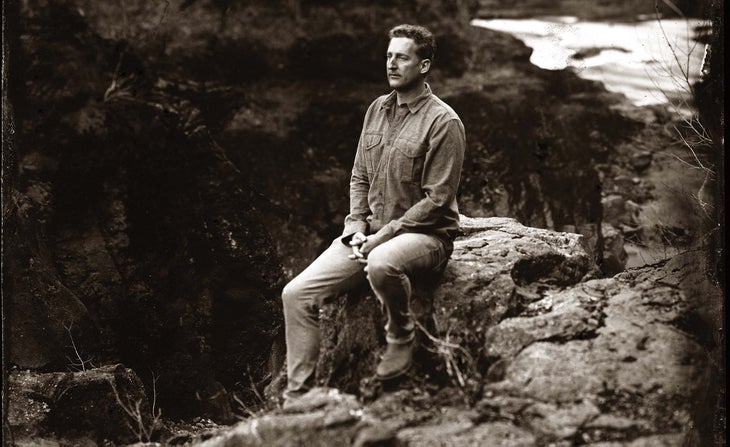
I joined the Navy as a sophomore in high school, trying to find a new life and a place where I could be myself. I didn’t know where I was going, but I knew that I rejected the mold that I was raised in. In 2004, after just over a year in the Navy, I came out as gay to my inner circle of friends. They were supportive and helped me navigate that exciting new time in my life. But by the end of my enlistment I was outed to the entire ship and had to face another obstacle: the legal discrimination of “Don’t Ask, Don’t Tell.” It ended my Navy career. I couldn’t live with a retreat from openness with my fellow sailors, and being outed felt like a breach of trust between colleagues who were duty-bound to protect each other. Even though I had escaped my fundamentalist upbringing, I was still not allowed to be open about who I am.
I resumed my search for a place to call home. I spoke out against “Don’t Ask, Don’t Tell,” and when that was repealed, I focused on supporting marriage equality. I became the first openly gay man to serve in the Seattle fire department. After the cost of my honesty in the Navy, I was worried that I was putting myself in harm’s way again. But this time, I was not only accepted by my closest friends, but also the entire organization and the city that I work for. As a hiker and climber, I found new role models. They’ve taught me how to leave my past behind and create a better life. Yet even with my endless optimism and all the social progress I’ve witnessed, much of my life has been defined by people who oppose the way I lead it.
On the summit pyramid of Shuksan, we scramble over steep rock on our way to the peak. When we reach the top, we find a stone ledge big enough to sit on. I look over to Eldorado Peak, which I climbed a few days earlier. I can still feel the height of the knife’s edge of that summit, the dizzying drop on both sides of an icy pinnacle.
Even though I was born on this land, I am only beginning to understand the depth of all that it encompasses, and my place in it—the history, and the unrecorded struggles of people who lived here. Perhaps it takes proximity, measured with every scramble and footstep, to really know the space between peaks, instead of seeing them only from the valleys below.
I’ve traveled all over the world and come back to my home territory in order to live as my authentic self. I’ve found that home, that sense of belonging, among a diverse and vibrant community of people, rooted in an astonishing natural world. With self-knowledge and acceptance, I’ve come to care ever more greatly for these mountains and valleys of the Pacific Northwest. The waters of the Salish Sea. The earth beneath my feet. This land that holds me in the palm of its hand, protected and uplifted.
Kimmerer’s wisdom returns to me again: “Becoming Indigenous to a place means living as if your children’s future matters.” This philosophy girded me in the fight for equality; my work fighting for my rights, for the rights of people like me, could mean that no one else would repeat what I went through. It gave me hope. It also felt like some kind of sacred duty.
There is more work to be done.
I now understand why I was so struck by those two partnered men who lived in North America 500 years ago. Before Cabeza de Vaca found them, they had never known judgment from anyone. The strangeness was not that they were together, but that a European man was there to observe them. His ideology was just as alien as he was. And yet he felt entitled to condemn their union.
There was a deep backstory for these men—one that’s more vital and vibrant than any label colonizers might try to apply. They probably met naturally, with no concern about what people might think. Perhaps they had been out hunting in the woods, on a mountain peak like I was, or out exploring their land. They could catch each other’s eye and hold each other’s gaze without shame. Their minds were not colonized, and their people weren’t confined to reservations. They could move closer to each other, be a part of a mating dance as natural, and just as vital, as their breath. They could hold each other around the campfire without the threat that whole civilizations were determined to erase them.
They could make a home together, without wondering if they would lose their jobs, be shunned by their families, be jailed or killed because they were different. Their love could live out in the open.What a wonder their story is. Perhaps I can see what their lives must have been only now that I too have the right to marry the person I choose.
Contrary to Cabeza de Vaca’s intention, his Account reminds me that there was a time when people like me belonged to this North American landscape just like the other Indigenous peoples. Eventually they would be marginalized, chased off their land, tortured, killed. It was a prelude to another brand of suffering that I and others like me endured.
I can only truly know what I have lived through. People like me have persisted, despite the many societal codes that have tried to force us toward dishonor and death. We have dignity and worth. And now, across the expanse of a half-millennium, I know I am not alone.
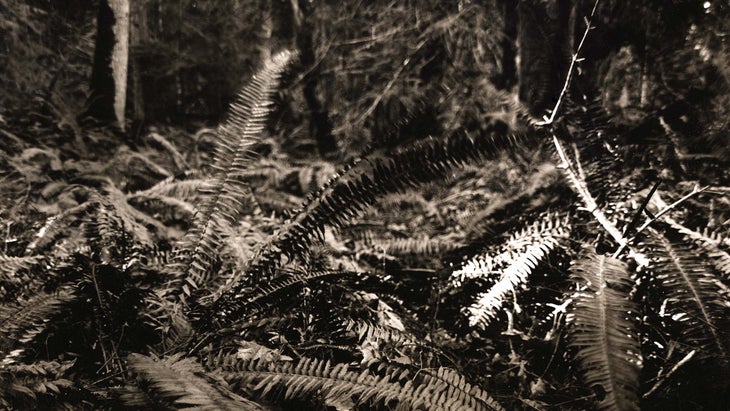
On my hike to the former dam site, I feel a new urge to see it from the viewpoint of the river. I make my way down an overgrown trail of dense slide alders. The thicket is dark. I snap and whistle to notify any predators of my presence.
Soon, I exit the shadows and walk out onto the banks of the Elwha, in a space that not long ago was underwater. For a time, this area was the lakebed of Lake Mills; today, it is virgin forest. I can see mature growth above me—a sharp line of pine that marks the former lakeshore. Below that line, the bright green growth of new plant life stands where the stagnant water once was.
The salmon have returned, and with them, seabirds and bears. So much had been lost because of the dam; so much has returned with the freedom of moving water.
A river, like love, was not meant to be dammed. It was meant to flow. Here, and in our society, manmade obstacles have been removed. In the aftermath, so much has grown in its place. Life fills the spaces that were once flooded.
My life is a part of this renewal.
The free-flowing waters deepen my love for the land, and my life. The more that I love them, the more I want to protect them. We all seek, and deserve, that connection, at home in our nature.

